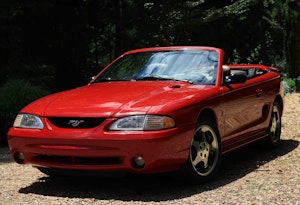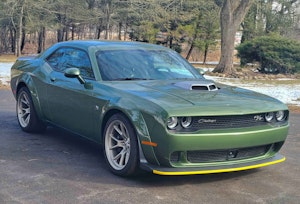Media | Articles
5 of the greatest street races you can still watch today
Street racing is a loaded term in today’s society. Most think of flashlight drags or other illegal pastimes, but events held on public roads remain among the most prestigious events on today’s motorsports calendar. 360-something days out of the year, these tracks serve duty as community byways, funneling traffic to mundane destinations. Once a year, their towns transform to host a festival of speed, with crash fences and brightly-colored curbing sprouting like weeds along familiar streets.
Many of these events are rooted in eras that predate today’s high-grade, well-manicured motorsports complexes. These sanctioned street races offer unique surfaces, challenging lines, and an atmosphere that will never be found behind the permanent walls of any established course. Better yet, they’re often the general public’s only view into a world that can never be truly explained without being there. By essentially invading the public sphere, these road course events democratize car culture rather than secluding it in isolated facilities.
Circuit de la Sarthe
Born out of a humble 64-mile street course that was plotted for the ACO’s first-ever race in 1906 (then known as the Automobile Club de la Sarthe), the Circuit de la Sarthe has been recognized as the stage for the ultimate 24-hour endurance race since 1923. Not even Germany’s day-long torture session on the Nürburgring equals France’s prestigious 24 Hours of Le Mans, and that’s entirely due to the course’s hundred-year commitment to brutal speed. In its contemporary configuration, the track measures just shy of eight and a half miles. Sure, that pesky Green Hell is a public road—albeit one with a toll—but, unlike the streets of Le Mans, no one’s getting to work quicker because of it.
While the overall shape of the Circuit de la Sarthe has changed significantly since its inception—both on account of the growing town of Le Mans and the ever-skyrocketing racing speeds—it still meanders through much of the same roadways as the earliest configuration. In the 1965 Jaguar promo piece above with Mike Hawthorne, watch as he casually slides his D-Type around corners as farm trucks and scooters flow by, nervously laughing at the chaos while narrating his thoughts. It’s rare for any street race to survive a century, much less one that represents the mecca of its sport.
Can’t-get-anywhere-else factor? The original 24-hour race, and a pleasant time in the French countryside. A course so large that you can go there every year and have an entirely different experience each time. We are in the sunset era of internal-combustion power; what better place to listen to its song at full-tilt than Dunlop Bridge—for 24 hours straight?
Marketplace
Buy and sell classics with confidence
Pikes Peak Hill Climb
While not a street race per se, the Pikes Peak Hill Climb remains the tallest sprint race of its kind. It’s among the most deadly, too. The 12.42-mile course winds along the ridges of the Rocky Mountains, gaining nearly 5000 feet in elevation. While its slopes are not as aggressive as, say, those of Mount Washington, the distance alone is an incredible torture test for roughly 10 minutes at a time. The drop in air density over such a dramatic rise in altitude creates an ever-increasing challenge for both the driver and the machine. Even cooling and aerodynamic efficiency drops off at Pikes Peak’s most critical sections.
The move to pavement is recent in the hill climb’s history. The event began in 1916 after Spencer Penrose had the wagon trail up to the peak graded for automobiles. Initially, the route served as a tourist activity for guests of the Broadmoor Hotel, Penrose’s recent acquisition. When motorsports became all the rage at the close of the 19th century, Penrose decided to launch the first Pikes Peak Hill Climb. Today, the record stands at either 7:57 or 10:04—depending on whether the person you’re asking is a “dirthead” or one who accepts paved-course times—but the inaugural climb up the hill took nearly 21 minutes … for the winning car.
While the layout hasn’t changed, the move to pavement came through action by environmentalists concerned with erosion. The change reinvented the kinds of machines that could succeed on Pikes Peak, even as it reduced the margin for error. The ribbons of pavement narrowed the available driving surface, and the material itself changed the dynamics of traction: A car’s behavior becomes far more “snappy” compared to its character on dirt. Even so, the Pikes Peak Hill Climb remains one of the few true wild-west events left in motorsports, in which the Unlimited class literally means run what you brung. The race itself is worthwhile, but spending the week watching practice is the real treat, as homebrew teams rub shoulders with factory-fed armies on the mountain.
Can’t-get-anywhere-else factor? Racing is simply different above the tree line, and spectating is more akin to a hiking adventure in the Rocky Mountains. Pikes Peak becomes the proving grounds for innovation from every contingency, with a unique variety each year thanks to the wide classes.
Indy may have opened its doors first, but Pikes Peak has been the longest running race here in the States. 2021 will be the 99th shot up the mountain, a race that has survived generations of change like Le Mans has. Fan Fest in downtown Colorado Springs is never a bad way to kill a Friday, either, with many of the drivers and cars hanging out in the streets.
Long Beach Grand Prix
Long Beach remains the longest-running street Grand Prix in the United States, despite California’s best attempts to crowd out car culture. While the course has hosted everything from Formula 1 to IndyCar, it has remained a springtime staple of Long Beach since 1975, when catch fences first sprouted along LBC’s famous Shoreline Drive. It’s difficult to imagine a time when you could drive a mere half-hour before stumbling through the gates of another race track in Southern California. Unfortunately, as residential development sprawled, many facilities closed down. Lions Drag Strip and Orange County International Raceway, the Riverside Raceway and Ascot Speedway have yielded to cookie-cutter boxes with windows and doors pasted on their sides.
The Long Beach Grand Prix has managed to survive L. A.’s incredible growth, and while you can easily buy tickets in the stands, the real adventure is crawling around the different parking garages, bridges, buildings, and restaurants in and around the venue. As far as exposing the region to motorsport, Long Beach provides a party platter of different disciplines, too. Stadium Super Trucks blasts its life-sized R/C trucks over ramps and curbs, Formula Drift hosts Super Drift alongside its own weekend event, and vintage racing weaves into the schedule along with IndyCar’s open-wheeled wonders.
Can’t-get-anywhere-else factor? For Los Angeles-area locals with a moderate measure of determination, the Long Beach Grand Prix is one of the most accessible events of the year. In the days leading up to the races, you can drive along Shoreline Drive with the catch fences on either side and do your best emulation of Alexander Rossi.
Isle of Man TT
Given its roots as a somewhat-outlawed street event for the United Kingdom, it’s no wonder that the Isle of Man Tourist Trophy is among the longest-running and the most dangerous street races on Earth. Racing kicked off around 1905 when, as would happen in British bureaucracy, a highway act passed opening the road for racing while condemning the mainland U.K. to tight speed limits. Unforgiving, unrefined, and relentless, the 38-mile blast has defined the careers of motorcycling’s most elite riders. Much of the Isle of Man event’s notoriety comes from the course’s penchant for taking the lives of riders. While many casualties are professionals and participants, a large portion of deaths occur outside of race weekends, when inspired amateurs surpass their skill levels on the tortuous course.
Moto-racing has come under attack in modern times, but the Isle of Man TT has somehow managed to avoid domestication. Too often, competition has been sterilized to prevent insurance policies and negative headlines from encroaching on the realities of a sport in which helmets and reinforced, fire-retardant footie pajamas are a racer’s best safety gear at speeds of over 150 mph. Perhaps thanks to the understanding spirit of the Irish, the Island of Man TT remains brutally challenging for riders crazy enough to enter.
Can’t-get-anywhere-else factor? A century-old assault against common sense, the Isle of Man TT may just be the absolute mecca of motorcycle racing. It’s hard to beat—two-wheeled excellences flying fearlessly over the same tarmac that you can pucker down—but we’d prefer to see you come back to tell the stories yourself.
Monaco
If one event embodies the spirit and presence of Formula 1, it’s Monaco. Together with the Indy 500 and our aforementioned 24 Hours of Le Mans, Monaco comprises the Triple Crown of Motorsport, a trio of races in three disciplines that defined racing through the past century. The course was also on Formula 1’s first competition calendar in 1950, though it began hosting racers in the inaugural 1929 Grand Prix. With the world’s most exotic racing series howling through one of its most glamorous locales, this coastline venue had to make this list.
Even as speeds have escalated, the course has remained true to its original route, creating a unique challenge on the Formula 1 calendar. The roadway surface is bumpy, and the streets were drawn with a complete indifference to the considerations of modern Formula 1 track designers: The series’ tightest corner, the switchback Grand Hotel hairpin, is closely followed by a tunnel that hurls drivers along the bay. With such a cantankerous layout, only the most adaptive drivers succeed, finding extra inches of throttle commitment as they inch every closer to the barriers with each corner.
Can’t-get-anywhere-else factor? The ultimate European Grand Prix which remains firmly cemented in the bricks and mortar of Monaco. While much of today’s Formula 1 calendar utilizes modern tracks tailored to the sport, old Monaco forces racers to accept its terms. Racing here doesn’t always shake out as everyone expects it to.










